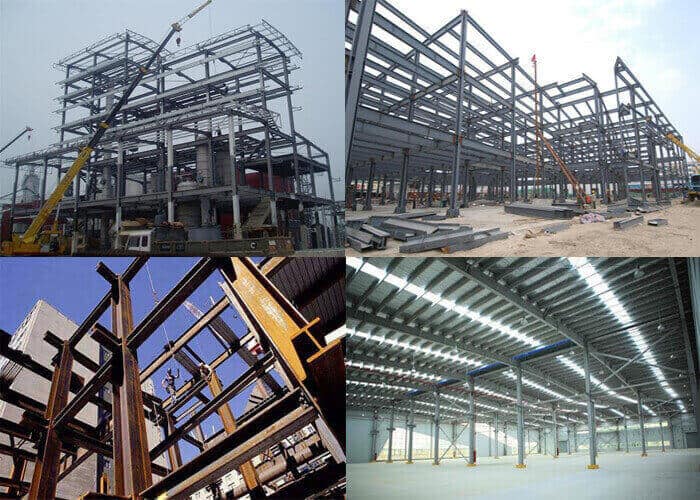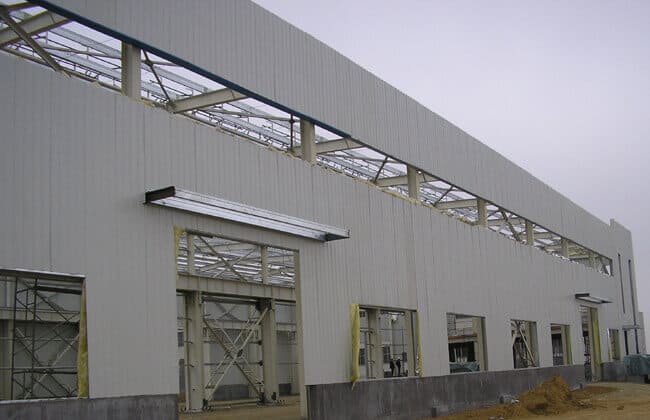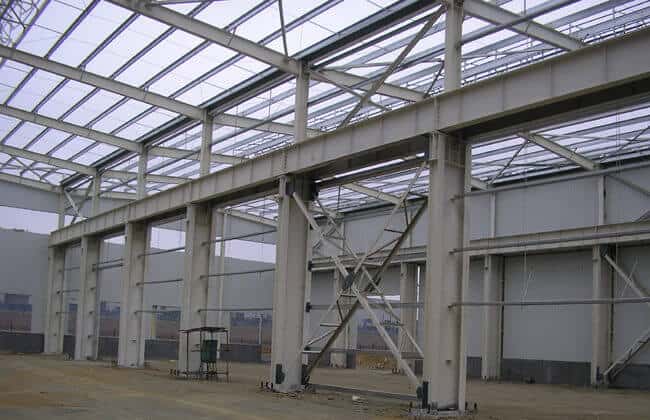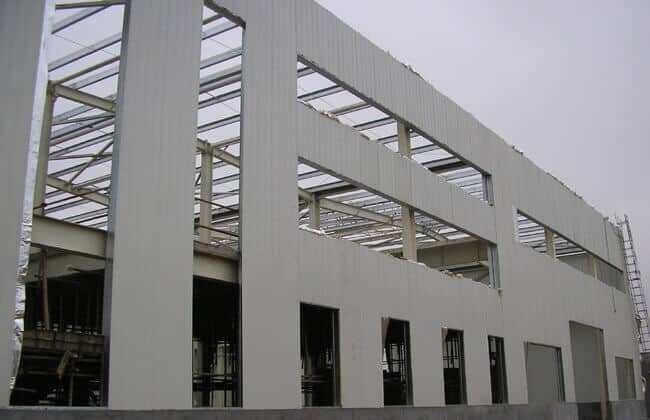Steel Industrial Building
Steel Industrial Building designed from Havit Steel is an efficient solution for industrial facilities, whether you need to build manufacturing facilities, workshops, warehouses. Our prefabricated steel structure building adapts to the operating requirements of any industry.

The classification of Steel Industrial Buildings:
According to the purpose:
- Production: Including the production workshops of various industrial enterprises.
- Auxiliary categories: including machine repair, tools, model workshops, etc.
- Power category: Including power stations, gas stations, compressed air stations, substations, boiler rooms, etc.
- Warehousing: The warehouse building for raw materials, semi-finished and finished products.
According to the form of load-bearing structure:
Steel structure load-bearing: The frame load-bearing structure is a load-bearing system composed of a horizontal frame and a longitudinal connecting member, and the wall only serves as an enclosure. It is suitable for large spans, high plants, and large crane loads. The load-bearing framework is made of steel plate or hot-rolled steel through cutting and welding.

The horizontal framework of the factory building includes roof beams (or roof truss), columns, and foundations. It bears the loads from skylights, roofs, walls, and other parts, as well as its weight, various loads generated by cranes, and longitudinal wall wind loads. These loads are transmitted to the foundation through the transverse framework through the columns.
The longitudinal connecting components are connected by the roof purlins, wall beams, tie rods, supports, etc. to the horizontal frame to form a single-story industrial building space system. They are mainly to ensure the stability of the transverse framework, bear the tension load, and transmit it to the foundation through the column.
Concrete load-bearing structure: The wall load-bearing structure generally refers to the outer wall adopts a load-bearing masonry wall with concrete pillars inside the wall to bear the load of the roof and crane. The roof adopts a steel structure, including steel beams, purlins, and roof panels.

Description of Steel Industrial Building
The application of steel structures in industrial building has a long history. Industrial buildings require this structure to provide the most abundant space and the most abundant industrial production space.
However, traditional reinforced concrete cannot meet the production requirements, so under this condition, a roof truss system was created. Steel roof trusses consist of roof trusses and bracing, and tie beams, many factories have cranes, and the crane beam system is an essential part of the factory building, which includes crane beams, braking structures, steel rails, and other connectors.
The purpose of industrial buildings is to serve all industrial processes. According to their production processes, there are specific requirements for materials, space, and structural forms, and the building space is sufficient.
The design of Steel Industrial Building
Design is essential for steel industrial buildings. Only thoughtful design can ensure that the building has a safe, hygienic, and convenient environment based on reliable engineering geology. Therefore, it can meet the requirements of storage, loading, and unloading.
Different environments and climates also have an impact on the design of industrial steel structure buildings.
For example, in cold areas, due to the requirements of cold protection, roofs and wall panels have to apply insulation materials. And window sizes need to be small. The metal structure buildings are relatively “heavy”;
However, in hot areas, due to the requirements of ventilation and heat dissipation, the building needs more and bigger windows. Since no heat insulation requirement, a single-layer color steel sheet for the wall is OK. Some structures may add insulation cotton to the roof for thermal insulation, and the steel structure buildings are relatively “lightweight.”

Moreover, different industries also influence the design of metal industrial buildings.
For example, steel mills and paper mills mostly apply single-span or single-span juxtapositions because their production processes are straight.
As for vertical production processes plants, such as machinery manufacturers and metal processing producers, their buildings are mostly square or rectangular multi-span combination and the interior connected. The heights of buildings are almost the same.
The heavy machinery factory, due to the vast differences in the size of the components and types of equipment, the shape of the industrial buildings have a lot of undulations. The caster workshops have more complex shapes as it has iron furnaces over the roof, open-span crane trestle, ovens, and Chimneys.
The Advantage

1) Lightweight and excellent seismic performance:
The steel structure building is secure. It does not thicken the steel plate, which achieves the load capacity of traditional brick-concrete and reinforced concrete.
Under the same design requirements and the corresponding load force, the steel structure can be more than 30% lighter than the traditional brick-concrete structure and 20% lighter than the conventional reinforced concrete.
Because the steel structure is lighter in weight and smaller in size, it has excellent seismic performance so that the prefabricated steel structure can minimize the damage to the building by the earthquake. It reduces the impact of the earthquake on the building. The overall rate of the overturning of the building.
2) Simple construction and short construction time:
The development of the steel structure building directly, the components required for installation, which process the manufacture at our factory.
In the design, the steel structure building does not require reinforced concrete during up to 20 days of maintenance, thereby significantly reducing the overall construction time of the project.
3) Environmental protection and sustainable development of building materials:
During the entire process of steel structure building construction, steel components only need to be hoisted and connected on-site, so there is no cement dust and various noises.
The install process protects the environment. It is environment-friendly. After the building demolished, the steel structure building components also use in other building structures











